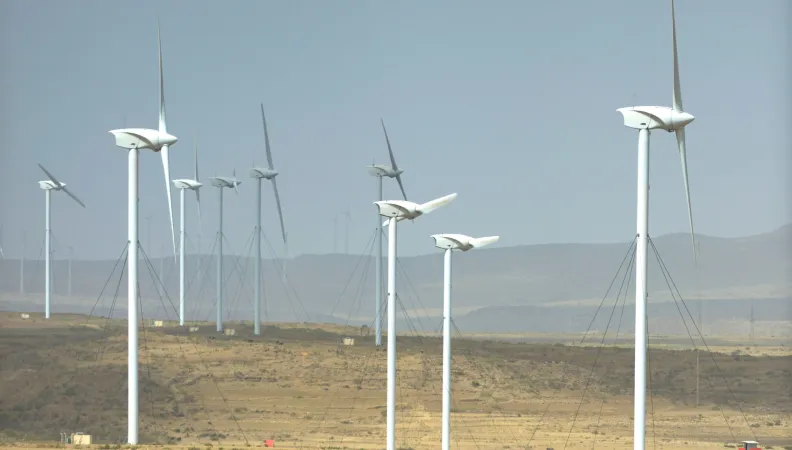Share the page
Ethiopia’s first wind farm in Mekele
Project


-
Project start date
-
-
AFD financing amount
-
€ 45000000
-
Country and region
-
Location
-
Mekele
-
Type of financing
-
Beneficiaries
-
Ethiopian Electric Power
AFD has co-financed the first wind farm in Ethiopia. Located in the north of the country near Mekele, the wind farm answers the growing domestic energy demand and boosts the Ethiopian economic growth.
Context
With almost 100 million inhabitants — 85% of the population in rural areas — Ethiopia is suffering from a chronic under-capacity in power generation and from frequent blackouts. In 2006, only 6% of the population had access to the power grid.
In the 1960s, the Ethiopian government undertook to develop the grid, mainly through the public utility EEPCo (now Ethiopian Electric Power, EEP). However, the fastgrowing demand (+12% a year in average) and the needs of the neighboring countries (Djibouti, Kenya, Sudan) are compelling Ethiopia to rapidly develop its
generation capacity.
As part of its strategy to diversify its energy mix, over 90% of which is currently based on hydropower,Ethiopia is increasingly targeting alternative renewable energy sources, including wind energy.
Description
AFD has granted a 45 million euros soft loan to EEP for the construction of the country’s first wind farm in Ashegoda, near Mekele, by the French companies Vergnet and Alstom Wind. The total project cost 231.7 million euros: 130 million euros were provided by a pool of French banks with a Coface guarantee, 40 million euros via a BNP Paribas loan and the remaining 16.7 million euros were financed by EEP.
This wind farm is the first of the country. It is also one of the largest wind farms in Sub-Saharan Africa, with an installed capacity of 120 MW.
Impacts
This project was commissioned on 26 October 2013 and has been connected to the grid since December 2013. Since then, it has increased power distribution in Ethiopia and has made it reliable, while contributing to the development of economic activities. It has also prevented the emission of 300,000 tons of CO2 a year compared to
generation in thermal power plants with a lower cost.
Finally, it has allowed Ethiopia to become familiar with wind systems and should raise the awareness of African partner institutions regarding the interest of major
renewable energy projects.


